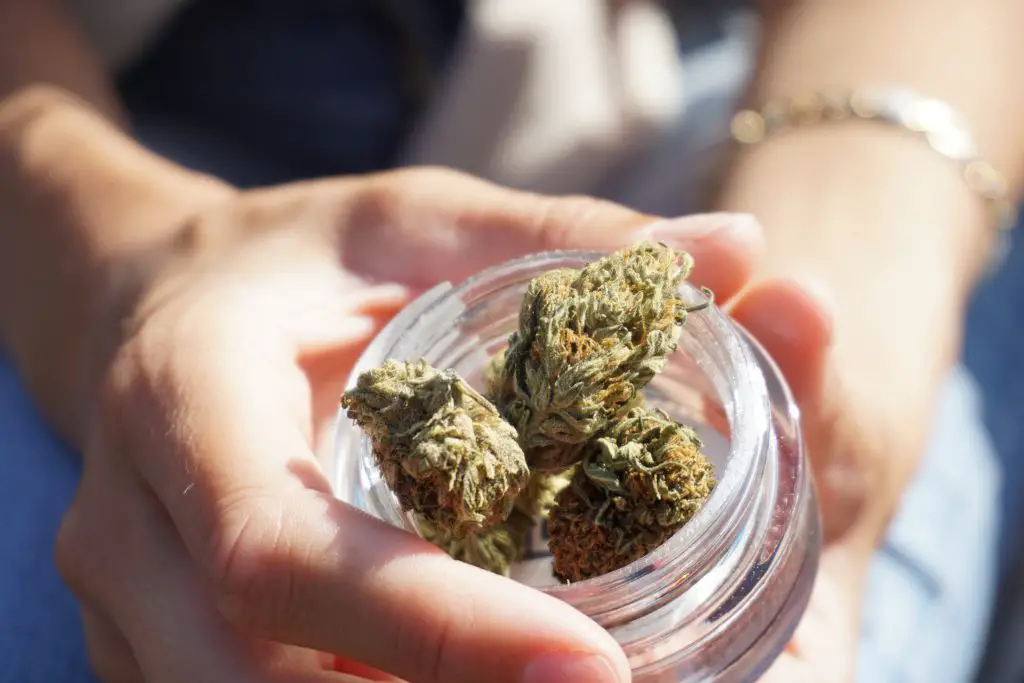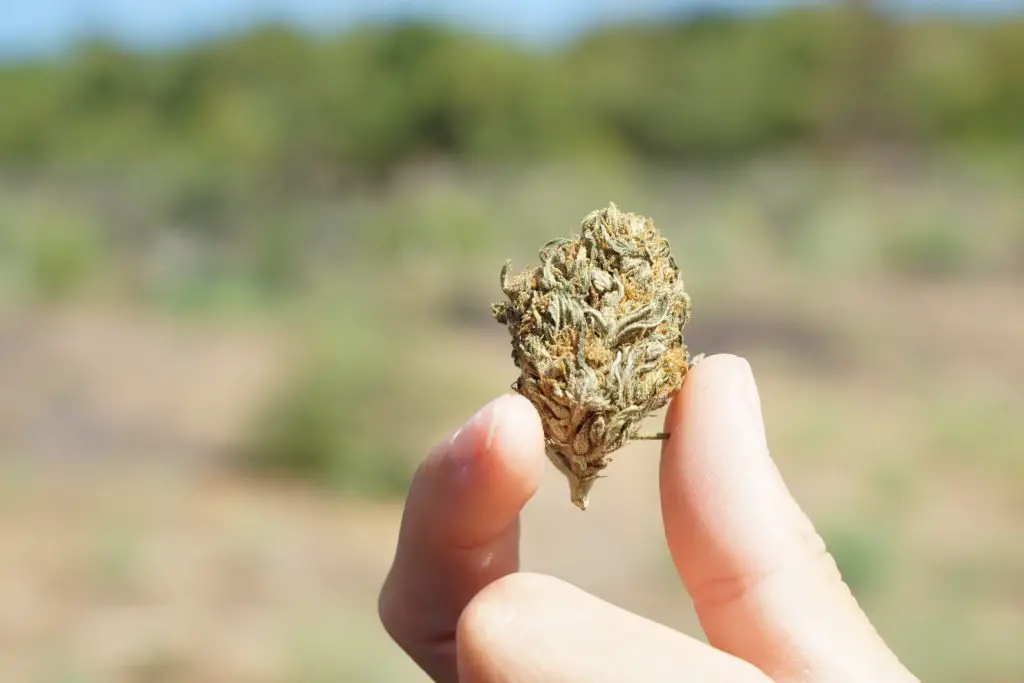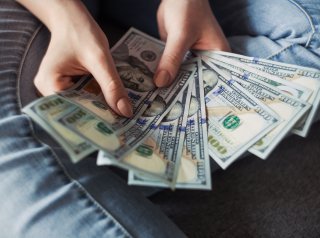The vast and varied cannabis glossary leaves many new users and old-school tokers confused. Marijuana nicknames and street names such as weed, pot, dope, grass, ganja, or Mary Jane are often used interchangeably with flower, which is more commonly used in dispensaries. But how about the horticultural term bud? Why are flowers also called buds? Are they the same, or is this some mistake that caught on? For the answer, let’s get to know the cannabis plants’ sticky, shimmery, and most sought-after part.
What is a Marijuana Flower?
A flower is the reproductive or seed-bearing part of a plant. Some plants are monoecious, which means they produce both female and male flowers at the same time. Others, like cannabis, are dioecious or plants that are either male or female. Male cannabis plants produce sacs filled with pollen, whereas flowers sprout from a female plant.
Only females are needed when cultivating cannabis for consumption as they contain the highest amounts of cannabinoids and terpenes—the source of effects and aromas that make the plant oh-so-desirable. The females must remain unfertilized until the end of the flowering period to provide unseeded flowers or sensimilla (the Spanish word for “without seeds”).
To ensure this happens, males are removed from the grow room as soon as their gender pre-flowers become identifiable. Otherwise, their pollen sacs could burst anytime and pollinate the females around. Accidental pollination produces seeded flowers that are not salable or pleasurable to consume. The seeds share a harsh, denser smoke that tastes gross and could irritate the throat if smoked accidentally.
How do you know you’ve been nurturing flowers and not pollen sacs? Take a closer look at the main parts of cannabis buds and their characteristics:
Calyx
The calyx is the first part of the flower to develop. Once it has formed, it houses the budding petals inside and acts as a protective structure for the flower itself. The calyx’s sepals create an enclosure that will only open when the flower components are fully formed. Within the calyx of cannabis plants are vital reproductive organs, including pistils, stigmas, and resin glands.
Pistils
The pistil is the female reproductive organ of flowers. It consists of the ovary, the style, and the stigmas, with hair-like strands for catching pollen grains needed for seed creation. Pistils emerge white and upright at first but eventually mature into fiery orange or brown curls. Depending on the variety, some may also develop red and pink hues, but these are pretty rare.
Sugar Leaves
Sugar leaves are much smaller than fan leaves, and only their tips can be seen peeking through clusters of flowers. Typically covered in a dense coat of shimmery trichomes, sugar leaves appear as if they have been generously sprinkled with sugar crystals. They are not nearly as potent or flavorful as the flowers, though, so most growers trim them off before drying. Additionally, they produce a harsher, plant-tasting smoke that won’t be enjoyable to inhale. Those who keep the sugar leaves on do so for added weight or extract production later on.
Trichomes
Last but certainly not least are the trichomes. These are the appendages on the flowers’ surface and are the main component of the cannabis plant’s resin. They appear as a blanket of white, powdery frost to the naked eye, but under the microscope, a magnifying glass, or a loupe, they look like mushroom-shaped hairs. Starting as globular outgrowths, the glands gradually grow taller and go from translucent to amber as they mature.
Trichomes are factories of terpenes, flavonoids, and cannabinoids. Therefore, they produce the well-known effects, aromas, and flavors of cannabis plants. Observing the glands’ growth stage through their color is the best way to tell whether the flowers are ready for harvest.
Chemical compound and essential oil production is ongoing when the trichomes are still translucent. Once most of the heads on the surface turn amber, the flowers are at their peak of potency and flavor profile.
So Are Marijuana Buds and Flowers the Same Thing?

Colloquial terms in the marijuana world don’t always agree with the horticultural description. By proper (botanist approved) definition, buds are small protuberances that emerge at plant axils or the tip of a stem, eventually maturing into a branch, flower, or leaf. On the other hand, marijuana ‘buds’ are not underdeveloped outgrowths but flowers allowed to mature for around 6 to 12 weeks before being harvested and processed for drying.
The legalization of marijuana for medical and recreational use in some countries and US states brought a wave of cannabis-derived products to dispensary shelves. From new types like sprays, tinctures, distillate, and rosin to classics like hash, charas, and kief, the surge expanded the 420 glossary. Many of the terms found their way into our modern-day lexicon and throughout the media.
With numerous marijuana products now available, many in the industry started using the term buds to refer to flowers. This is to distinguish the smokable part of the plant from other forms of cannabis flower-derived products.
Going back to the question. Yes, marijuana flowers and buds are the same thing. If you walk into a dispensary and ask for buds, they will give you dried, smokable flowers.
A Marijuana Flower by Any Other Name Would Smell Just as Dank
Whether you prefer sticking to the term flower or calling it a bud, the sought-after product would smell just as dank as long as grown, dried, and cured properly. It doesn’t matter if they are cultivated from your own backyard or purchased from dispensaries like Tokyo Smoke 333 Yonge—quality is what’s important.

Flowers remain to be the most popular form of cannabis despite the many options available because of their versatility. They can be smoked through joints, blunts, pipes, bongs, and vaporizers, turned into concentrates or extracts, or incorporated into edibles. Not sure which consumption method is best for you? There are different ways to enjoy your buds, each one providing a unique experience with varying onset time and duration (how long the users feel high). As long as you have marijuana flowers, you can experiment and try out various modes of delivery until you find whatever suits your needs. Different





